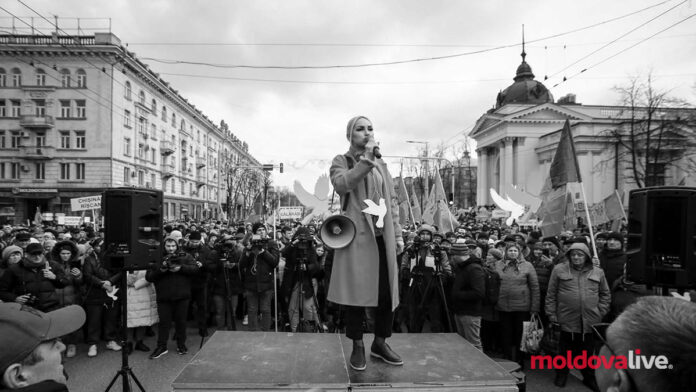On the one-year anniversary of unleashing the dogs of war, Russia has been spreading a lot of misinformation. The supposed provocation planned in Transnistria, however, did not materialize.
Numerous and especially oppressive are the unrest a year after Russia’s invasion of the neighboring country. Among them, we find, among others, the threat of opening new fronts, in Transnistria or Moldova. According to the Russian Ministry of Defense, Kyiv is planning an armed provocation in Transnistria, a false flag operation to be staged as a Russian attack. Ukrainian President Volodymyr Zelensky denied the accusation, saying his country does not attack sovereign countries but respects the independence of other states. ´Transnistria is Moldova´ said the leader from Kyiv, urging the administration from Chisinau to keep calm, writes TAZ.
Transnistrian President Vadim Krasnoselski announced that he was not aware of any planned attack and promised that he himself would immediately inform the population if the situation changed. Even the leader of Belarus, Alexander Lukashenko, did not believe the aberration that the Ukrainians would be so crazy as to open another front, which would be to their disadvantage.
The German press promptly took up the subject, no doubt offering it from a media point of view, but in many cases without putting it in the proper context and without knowing the realities of Transnistria, let alone the situation in Moldova.
Thus, Russia’s strategy paid off. While Transnistria is at the center of attention, in the capital Chisinau, the destabilization of the country, a constituent element of the Russian hybrid war, is in full swing. In the Republic of Moldova, this form of influence is nothing new. Russia, which is exploiting Moldova’s internal struggles and problems, has just to sit back and watch.
FOR THE MOST IMPORTANT NEWS, SUBSCRIBE TO OUR TELEGRAM CHANNEL!
In her opinion, the interests of the pro-Russian political forces in Moldova conveniently overlap with those of Russia. The first of these forces is led by the Şor Party, whose leader Ilan Şor was sentenced to seven years in prison after, in 2014, he caused approximately one billion US dollars to disappear from the three largest banks in Moldova, in the biggest corruption scandal in the country. Shor is a fugitive oligarch who is hiding in Israel and wants to regain power, or simply avoid prison, TAZ recalls.
The Shore Party is trying its best to torpedo the pro-Western government’s efforts to fight corruption in the country. And Russia, what a surprise, wants to see the Moldovan executive sacked. They found each other, Shor and Russia.
But there are factors much more dangerous than 1,500 poor and unmotivated Russian-Transnistrian soldiers, notes TAZ.
The Republic of Moldova has to face several crises at the same time: the energy crisis (due to the old dependence on Russian gas), the economic crisis (high inflation), and the social crisis (protests). For months, Şor has been calling for protests, paying demonstrators, bringing them from all over the country in buses, and exploiting the poverty of these people for his political purposes. Most recently this week, when the biggest protests in recent times took place. Demonstrators chanted ‘No war’ and ‘Down with Maia Sandu’. People carried paper doves of peace, which later ended up in the trash.
Among the demonstrators, a new narrative was imposed, Chisinau and Kyiv are the ones who wanted to open a second front in Transnistria and bring the war to Moldova. This is while Russia is presented as a stabilizing power for Moldova.
While all eyes are on one side of the Dniester, the river that separates the breakaway province of Transnistria from the rest of the country, the real epicenter of tensions lies on the other side. Russian disinformation is a diversionary tactic, concludes TAZ.


